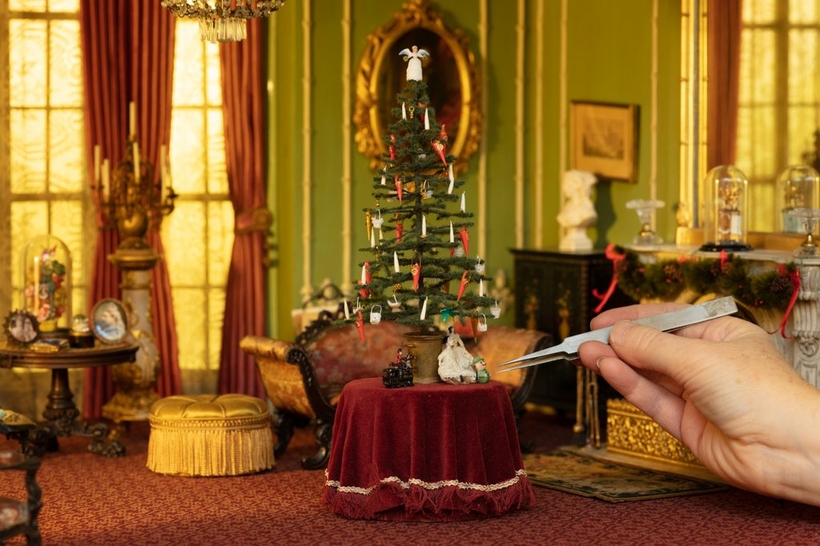Peer into the miniaturized splendor of any of the Thorne Rooms and I dare you not to swoon. The near-hypnotic lure of these mini mundi comes from their magical intersection of scale and skill. When shrunk, even the most quotidian object—a vase, a lamp, a copper pot—is transformed into a precious talisman that inspires fascination and awe.
While these impeccably appointed rooms cry out to be a part of some lucky child’s world, they aren’t dollhouses and were never intended as playthings. They were instead the brainchild of Mrs. James Ward Thorne, an avid miniature collector and enthusiast. Thorne had no formal training in art, architecture, or design, but she had a good eye and an ambitious goal—to document the history of interior-design styles around the world. At first, she used miniatures from her own extensive collection, but as her interest in the project deepened, she hired craftsmen and artists to fashion perfectly scaled and (mostly) historically accurate replicas to feather the diminutive nests.
The rooms—68 in total—were created between 1932 and 1940. At the end of that decade, Thorne presented the rooms to the Art Institute of Chicago (A.I.C.), which is where they now reside, revered by natives and tourists alike.
The near-hypnotic lure of these mini mundi comes from their magical intersection of scale and skill.
A decade ago, staff members at the A.I.C. were brainstorming holiday displays for the Thorne gallery when one staffer had the inspired notion of bringing the decorations inside the rooms themselves. Voilà—a new tradition was born. Would Thorne approve? “Over the years we have come to see these as art objects,” says A.I.C. curator Lindsay Mican Morgan, “not just period rooms. We attempt to evoke Mrs. Thorne as an artist, and an inspiration.”

Because of the extraordinary level of expertise required to make the decorations, only a few new rooms at a time are slated for these additions. The selections also have to be culturally correct: with few exceptions, bedrooms were not decorated. A Shaker room wouldn’t be decorated, either. And the painted backdrops seen through a room’s windows and doorways have to align with the winter season.
This year, 12 decorated rooms are on view through January 7. Notable among these displays is the English Drawing Room of the Victorian Period, the only interior that has a Christmas tree. Although the tree is now among the most iconic symbols of the season, the Tannenbaum was originally a German custom that was popularized in England by Queen Victoria, who had a German grandmother. Other rooms that have been done up in seasonal style are the Virginia Entrance Hall with its wreath, mistletoe, and garlanded stairway; the midcentury California Hallway with an Otto Natzler menorah and dreidel; the 1930s French Library, which sparkles with Art Deco holiday glamour; and the traditional Chinese interior filled with shadow puppets and instruments for celebrating the Chinese New Year.
There’s one English room that won’t be decorated but is still part of the holiday story. It’s from the mid-1600s, during Oliver Cromwell’s puritanical reign as Lord Protector of the Commonwealth: celebrating Christmas was illegal, and so-called mince sniffers went around “outing” those who broke the law. —Yona Zeldis McDonough

